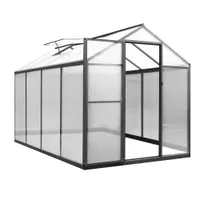How to clean a greenhouse and get it prepped and primed for the spring growing season
Boost light levels and create a clear and healthy growing space for seedlings
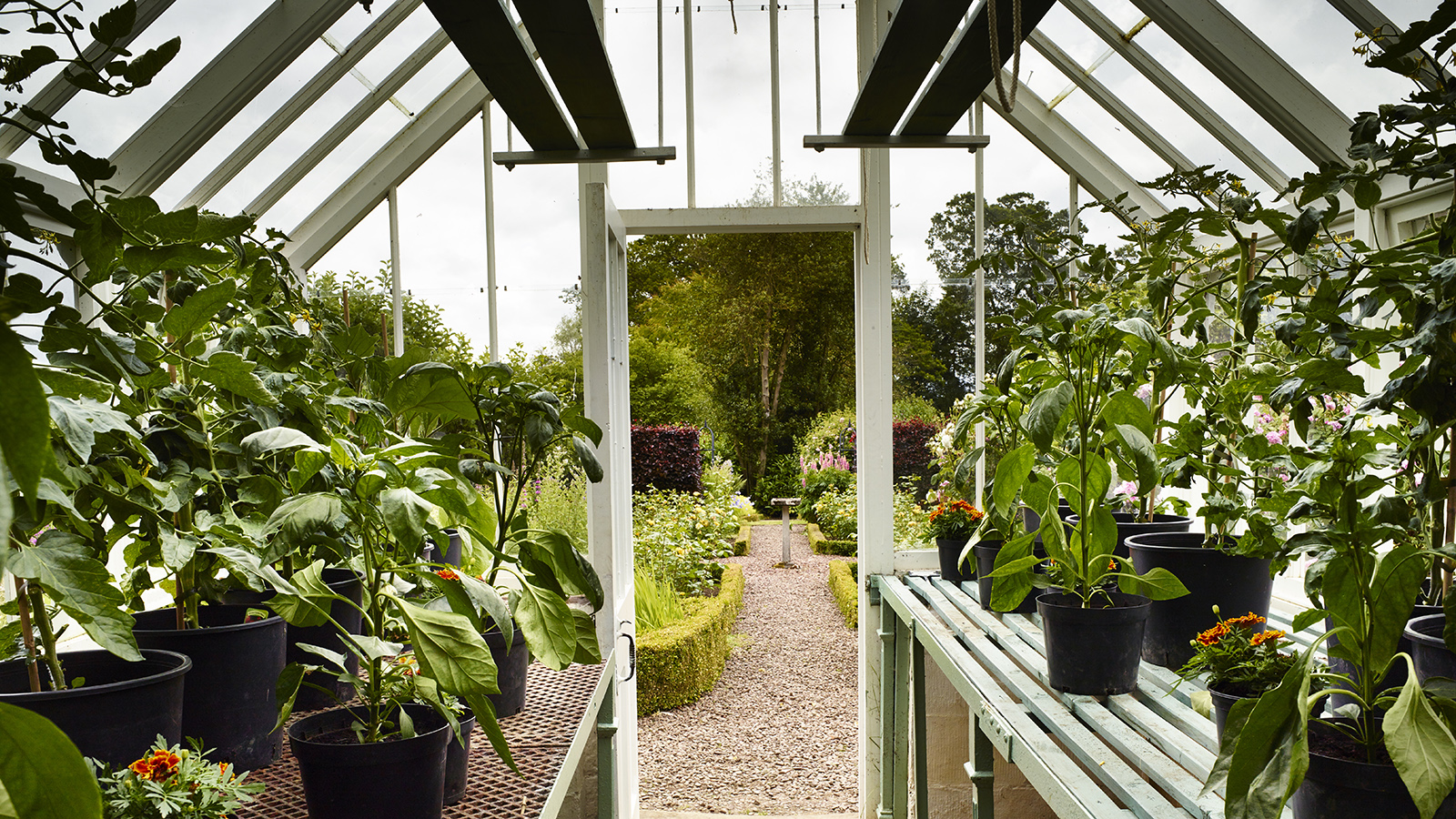

Cleaning a greenhouse can be a pretty daunting task. But done right, it is an extremely important job when it comes to getting the most out of the growing seasons.
Having a clear and uncluttered space is the ideal environment for getting to grips with potting up your seedlings. Ensuring windows are unclogged with dirt and grime, means that you're maximizing the light levels in your greenhouse for the best possible growing conditions.
'A greenhouse is a closed environment, which while excellent for growing herbs, vegetables, and plants can also allow mold, fungi, and bacteria to thrive if not properly cleaned and maintained,' says Gayle Dawson-Williams of Wisconsin Greenhouse Company
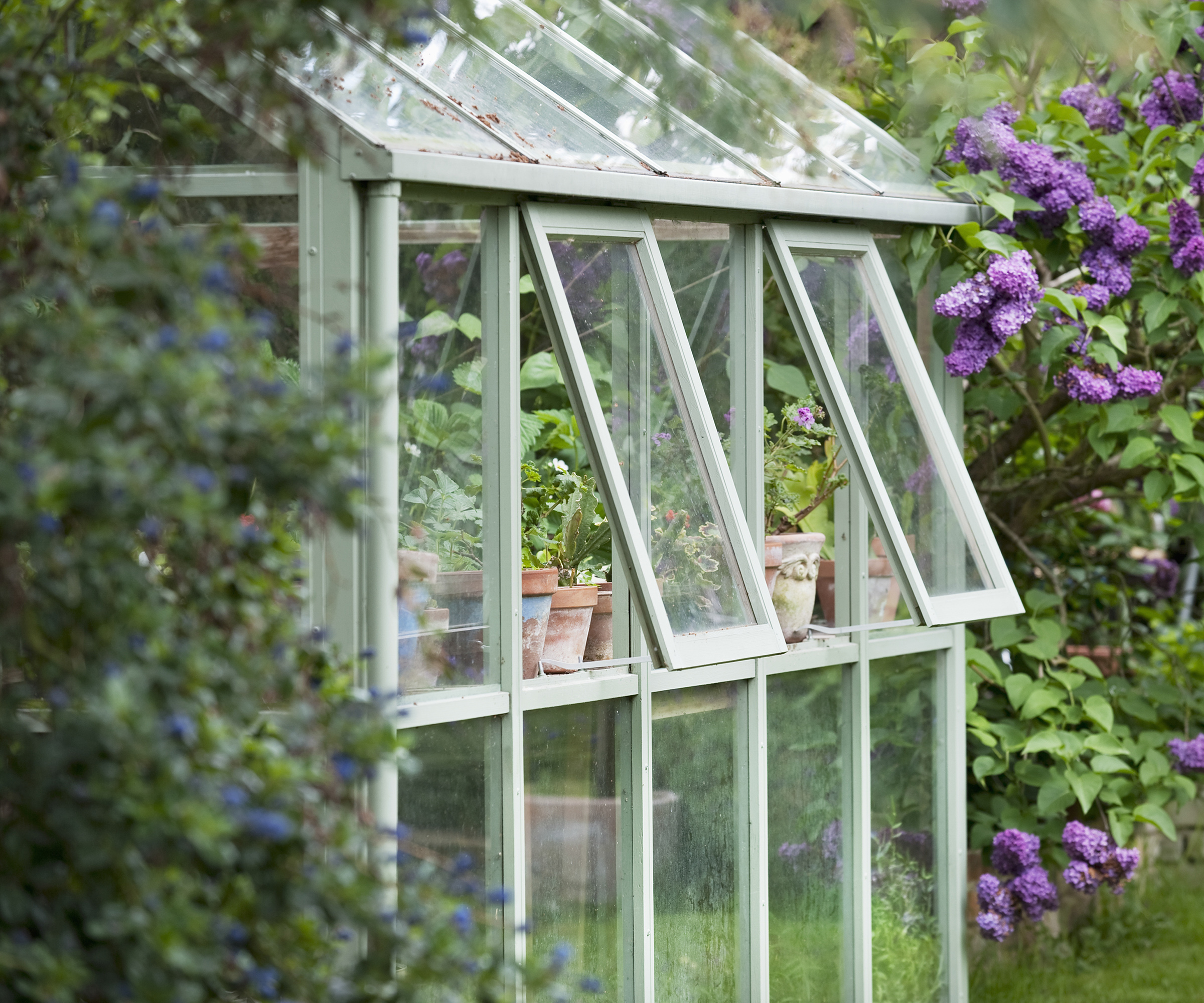
How to clean a greenhouse to help your seedlings flourish
Cleaning a large structure, DIY greenhouse or cold frame properly is an important task to get right. It's a big job, so a methodical approach will help you do this in the most efficient way possible.
The result you are aiming for is a neater working environment, with broken pots and other debris disposed of, as well as a healthy one, where pests and disease won't fester.

Gayle Dawson-Williams, of Wisconsin Greenhouse Company, has worked in the greenhouse industry for over a decade, and is currently heading up Homestead, a new division of residential greenhouses for the North American market.
1. Empty your greenhouse

'Begin by removing all plants from within the greenhouse,' says Gayle Dawson-Williams. 'I work from the top down, including exterior and interior. A soft brush will loosen any debris from interior and exterior framing, glazing, and benches.'
'I then sweep out or use a shop-vac to remove any loose material in the interior and sweep debris from areas where any gutters will drain in the exterior,' she says.
Design expertise in your inbox – from inspiring decorating ideas and beautiful celebrity homes to practical gardening advice and shopping round-ups.
2. Clear out the gutters
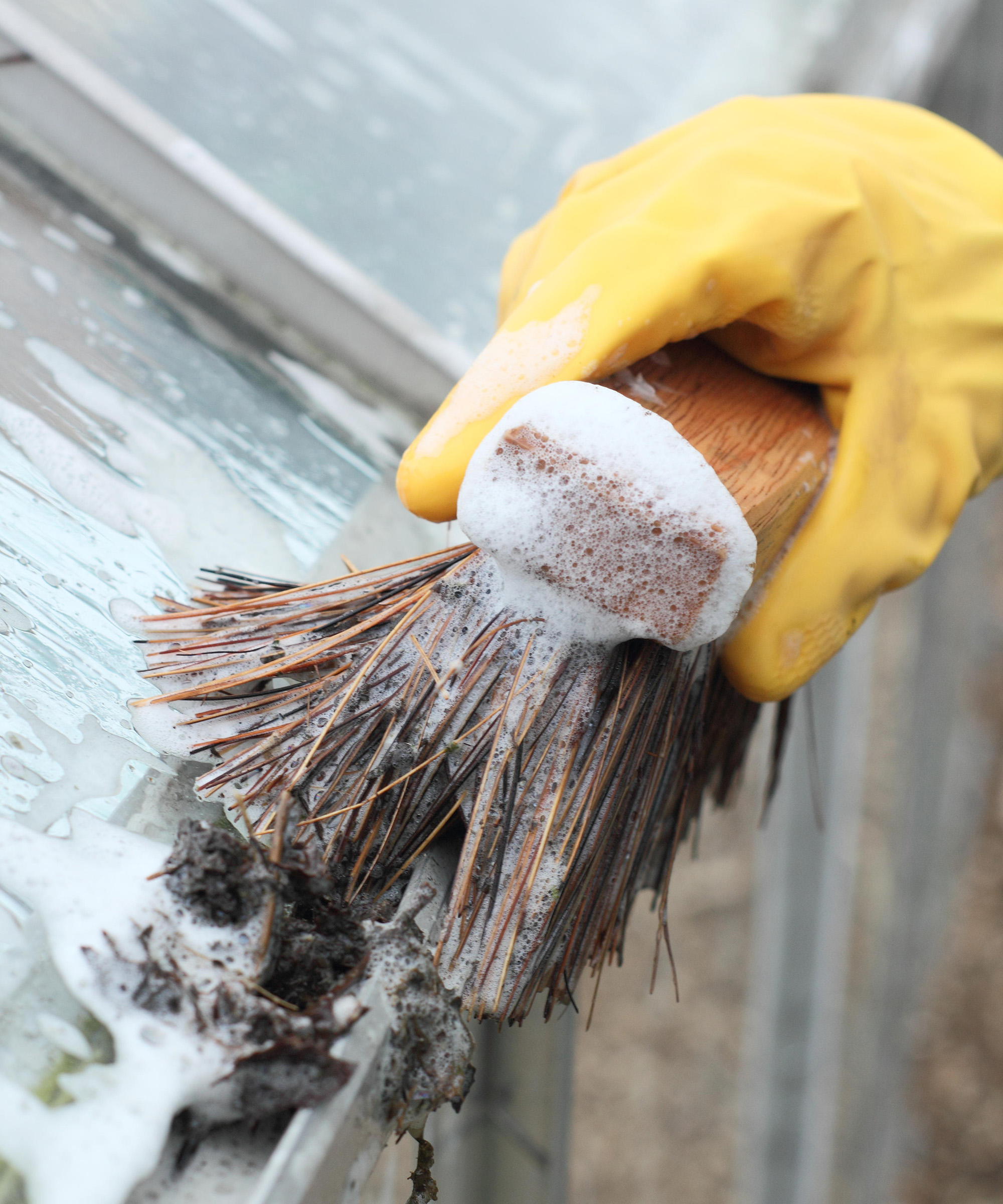
Another greenhouse tip is to clear dead leaves and other debris from your gutters. Clearing gutters is particularly important if you've decided to attach a rain barrel when planning a greenhouse.
'Wipe all gutters and downspouts with a mild enzyme detergent or diluted hydrogen peroxide. Rinse well with water,' says Gayle.
A diluted hydrogen peroxide mix is safe for plants and vegetables to grow in a greenhouse, and surfaces, try this 128 oz. 12% Hydrogen Peroxide All Purpose Cleaner at The Home Depot.
But if you’ve noticed algae, mold growth or fungi, opt for an enzyme-based cleaning solution or a specialty product for greenhouses with either quaternary ammonium compounds or hydrogen dioxide.
3. Wipe down windows inside and out
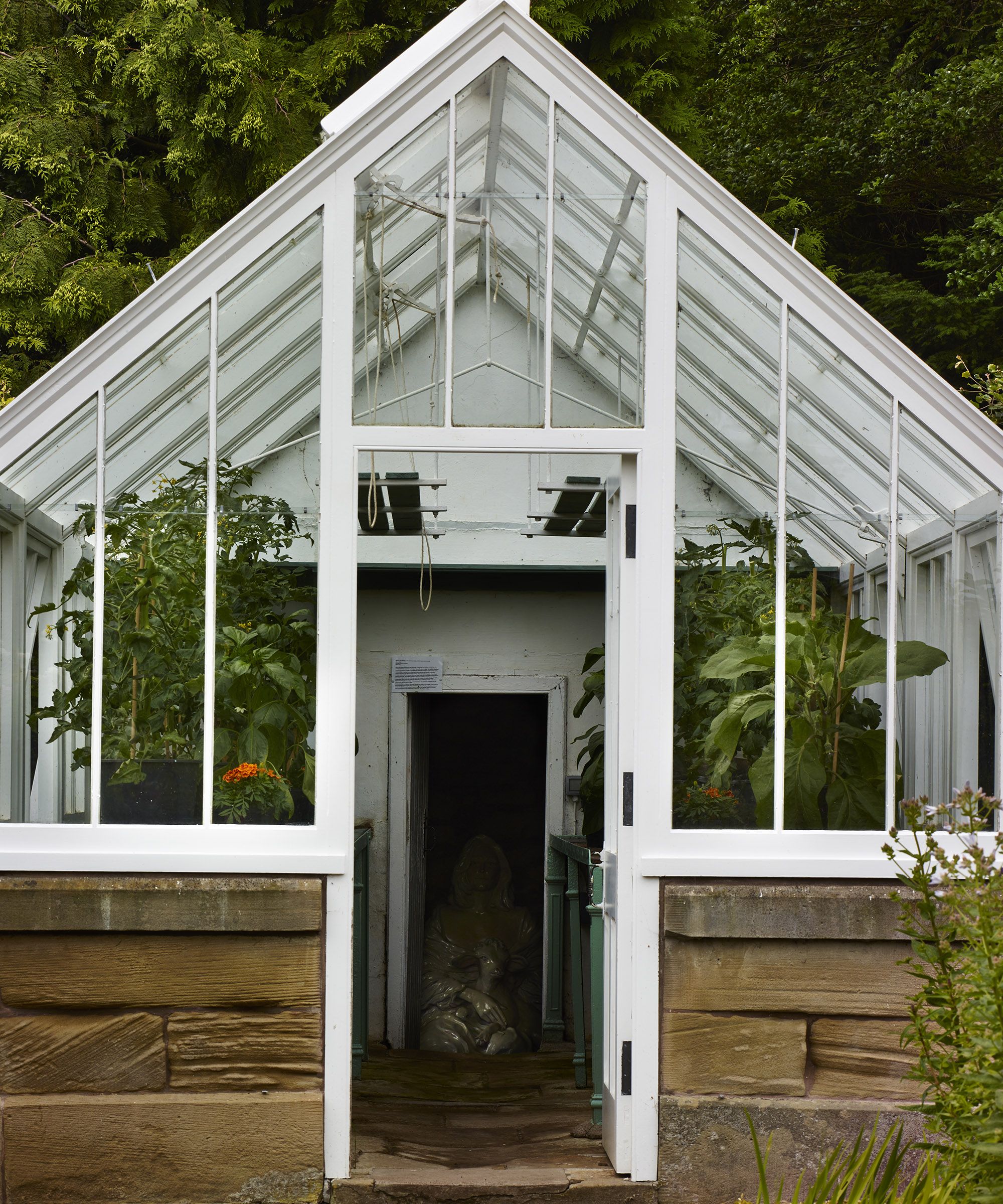
Dirty windows can really affect how well your greenhouse functions. They reduce light levels which hinder plant growth.
'Check for mold and dirt gathered in framing profiles and glazing seals, and remove with a stiff implement if you can, then disinfect.'
'Then using a soft brush or sponge, scrub the glass down inside and out. 'Use a squeegee to keep glass crystal-clear as you rinse,' says Gayle.
Alternatively wipe your glazing dry with a lint-free cloth to get rid of streaks.
4. Wash benches and pots
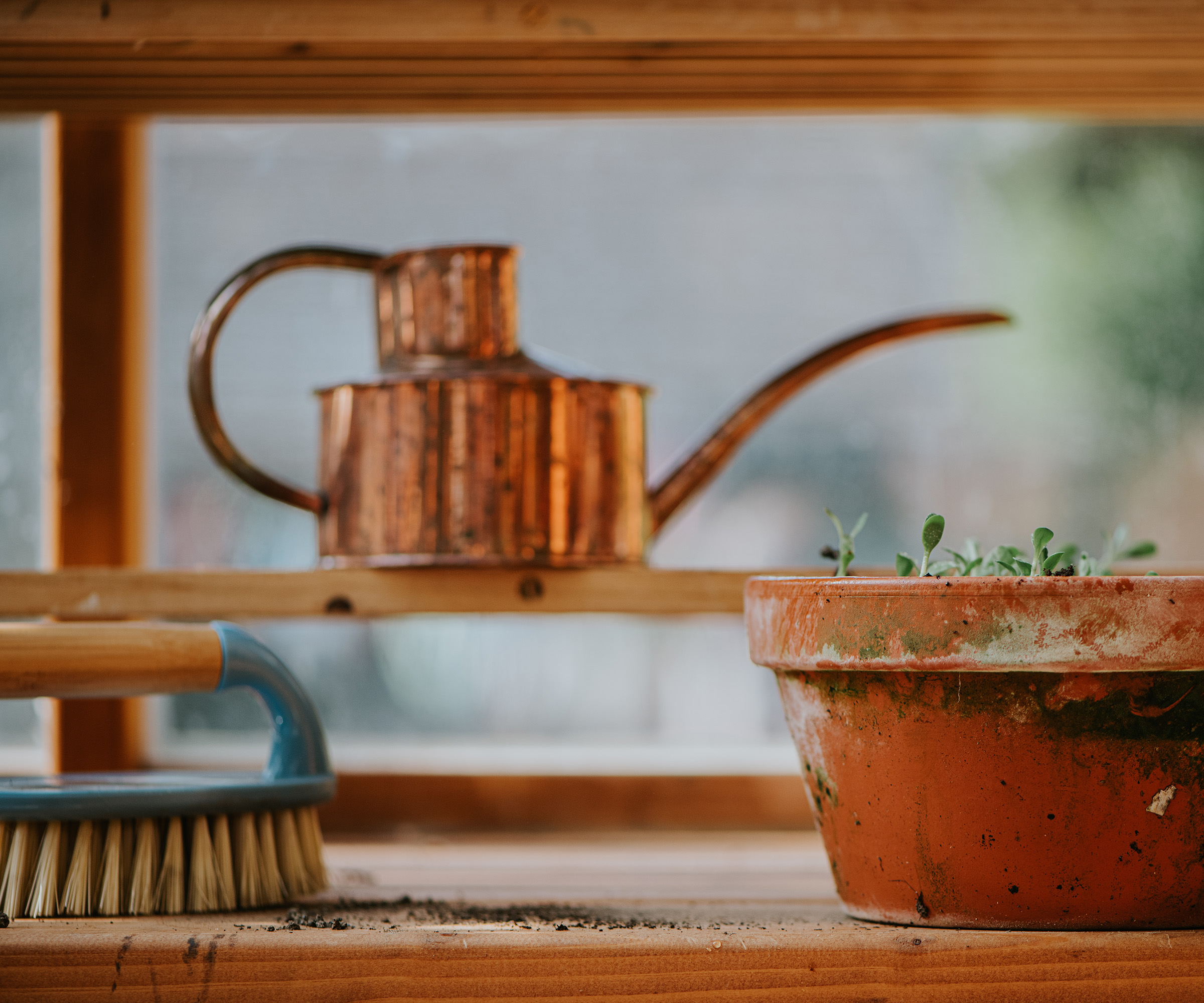
'Rinse well on both interior and exterior, then clean your growing benches. Clean flower pots and any containers which will be reused. They should be scrubbed well with a stiff brush and your chosen cleaning agent, then rinsed and set in the sun to dry,' says Gayle.
'If you use irrigation tubing inside of your greenhouse, rinse it and soak in a hydrogen peroxide mix, and rinse again, taking care that all joints and valves are wiped clean,' she says.
Cleaning a greenhouse is a good opportunity to get rid of any broken pots and seed trays. You may also want to take this chance to organize the space in order to optimize how you use it.
Also remember to check for any mold growing on seed trays.
FAQs
How do you sanitize a greenhouse?
A home-made dilution of hydrogen peroxide and water is Gayle Dawson-Williams, of Wisconsin Greenhouse Company's, favorite sanitizing solution for greenhouses.
But there are a number of commercially available greenhouse disinfectants for pathogen and algae control. 'Quaternary ammonium compounds, hydrogen dioxide, hydrogen peroxide blends, and algaecides for greenhouse use are commercially available, and chlorine bleach can be an option if very well rinsed,' says Gayle.
'Alcohol can be used to disinfect propagation tools but is generally not used for greenhouses,' she says.
Can I power wash my greenhouse?
Power washing may be used if your greenhouse structure and materials can stand up to high pressure water jets but will not disinfect or help keep further bacterial growth at bay,' says Gayle Dawson-Williams, of Wisconsin Greenhouse Company.
'Pathogens may still be an issue if power-washing is the only step you take in greenhouse cleanliness,' she says.
Can I use vinegar to clean a greenhouse?
According to Gayle Dawson-Williams, of Wisconsin Greenhouse Company, vinegar can be used on greenhouse glass after disinfecting, in order to achieve a streak-free shine.
However she explains it's not recommended for surface cleaning as it does not effectively eradicate pathogens known to affect greenhouse environments.
If you're in the zone for cleaning and organizing. Why not check out our shed organizing ideas and get all your garden structures in order.

Teresa was part of a team that launched Easy Gardens magazine two years ago and edited it for some time. Teresa has been a Gardens Editor at Homes & Gardens, Country Homes & Interiors and Living Etc magazine since 2020 and has developed close working relationships with top garden designers, and has been exposed to an array of rich garden content and expertise.
